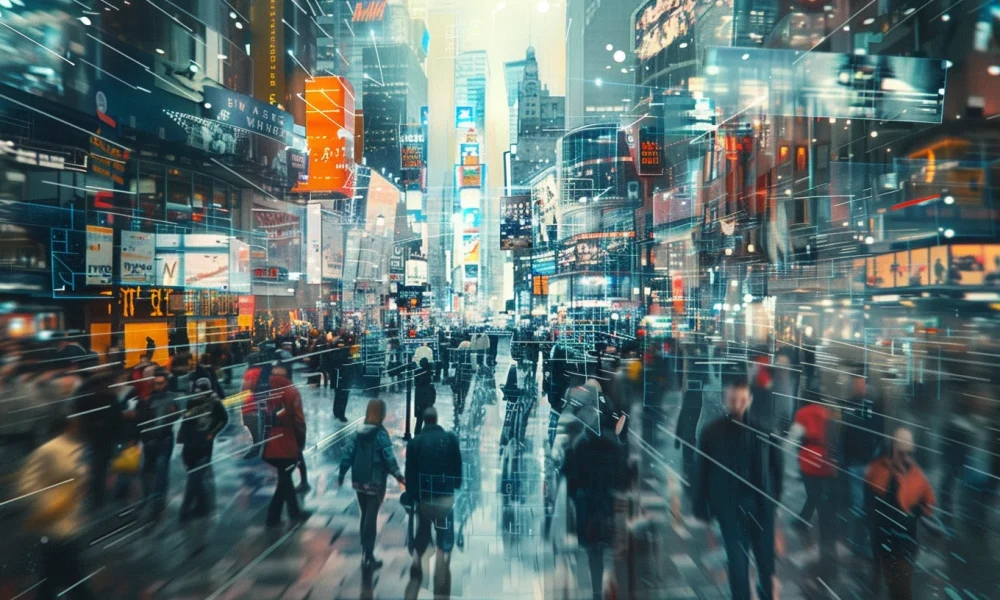Peripheral vision, an often-overlooked aspect of human sight, plays a pivotal role in how we interact with and comprehend our surroundings. It enables us to detect and recognize shapes, movements, and important cues that are not in our direct line of sight, thus expanding our field of vision beyond the focused central area. This ability is crucial for everyday tasks, from navigating busy streets to responding to sudden movements in sports.
At the Massachusetts Institute of Technology (MIT), researchers are delving into the realm of artificial intelligence with an innovative approach, aiming to endow AI models with a simulated form of peripheral vision. Their groundbreaking work seeks to bridge a significant gap in current AI capabilities, which, unlike humans, lack the faculty of peripheral perception. This limitation in AI models restricts their potential in scenarios where peripheral detection is essential, such as in autonomous driving systems or in complex, dynamic environments.
Understanding Peripheral Vision in AI
Peripheral vision in humans is characterized by our ability to perceive and interpret information in the outskirts of our direct visual focus. While this vision is less detailed than central vision, it is highly sensitive to motion and plays a critical role in alerting us to potential hazards and opportunities in our environment.
In contrast, AI models have traditionally struggled with this aspect of vision. Current computer vision systems are primarily designed to process and analyze images that are directly in their field of view, akin to central vision in humans. This leaves a significant blind spot in AI perception, especially in situations where peripheral information is critical for making informed decisions or reacting to unforeseen changes in the environment.
The research conducted by MIT addresses this crucial gap. By incorporating a form of peripheral vision into AI models, the team aims to create systems that not only see but also interpret the world in a manner more akin to human vision. This advancement holds the potential to enhance AI applications in various fields, from automotive safety to robotics, and may even contribute to our understanding of human visual processing.
The MIT Approach
To achieve this, they have reimagined the way images are processed and perceived by AI, bringing it closer to the human experience. Central to their approach is the use of a modified texture tiling model. Traditional methods often rely on simply blurring the edges of images to mimic peripheral vision. However, the MIT researchers recognized that this method falls short in accurately representing the complex information loss that occurs in human peripheral vision.
To address this, they refined the texture tiling model, a technique initially designed to emulate human peripheral vision. This modified model allows for a more nuanced transformation of images, capturing the gradation of detail loss that occurs as one’s gaze moves from the center to the periphery.
An essential part of this endeavor was the creation of a comprehensive dataset, specifically designed to train machine learning models in recognizing and interpreting peripheral visual information. This dataset consists of a wide array of images, each meticulously transformed to exhibit varying levels of peripheral visual fidelity. By training AI models with this dataset, the researchers aimed to instill in them a more realistic perception of peripheral images, akin to human visual processing.
Findings and Implications
Upon training AI models with this novel dataset, the MIT team embarked on a meticulous comparison of these models’ performance against human capabilities in object detection tasks. The results were illuminating. While AI models demonstrated an improved ability to detect and recognize objects in the periphery, their performance was still not on par with human capabilities.
One of the most striking findings was the distinct performance patterns and inherent limitations of AI in this context. Unlike humans, the size of objects or the amount of visual clutter did not significantly impact the AI models’ performance, suggesting a fundamental difference in how AI and humans process peripheral visual information.
These findings have profound implications for various applications. In the realm of automotive safety, AI systems with enhanced peripheral vision could significantly reduce accidents by detecting potential hazards that fall outside the direct line of sight of drivers or sensors. This technology could also play a pivotal role in understanding human behavior, particularly in how we process and react to visual stimuli in our periphery.
Additionally, this advancement holds promise for the improvement of user interfaces. By understanding how AI processes peripheral vision, designers and engineers can develop more intuitive and responsive interfaces that align better with natural human vision, thereby creating more user-friendly and efficient systems.
In essence, the work by MIT researchers not only marks a significant step in the evolution of AI vision but also opens up new horizons for enhancing safety, understanding human cognition, and improving user interaction with technology.
By bridging the gap between human and machine perception, this research opens up a plethora of possibilities in technology advancement and safety enhancements. The implications of this study extend into numerous fields, promising a future where AI can not only see more like us but also understand and interact with the world in a more nuanced and sophisticated manner.
You can find the published research here.



